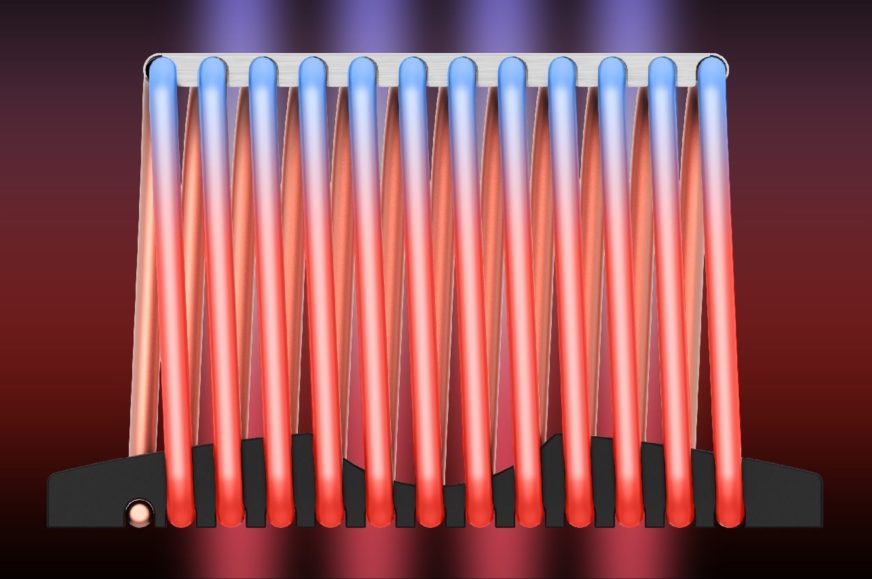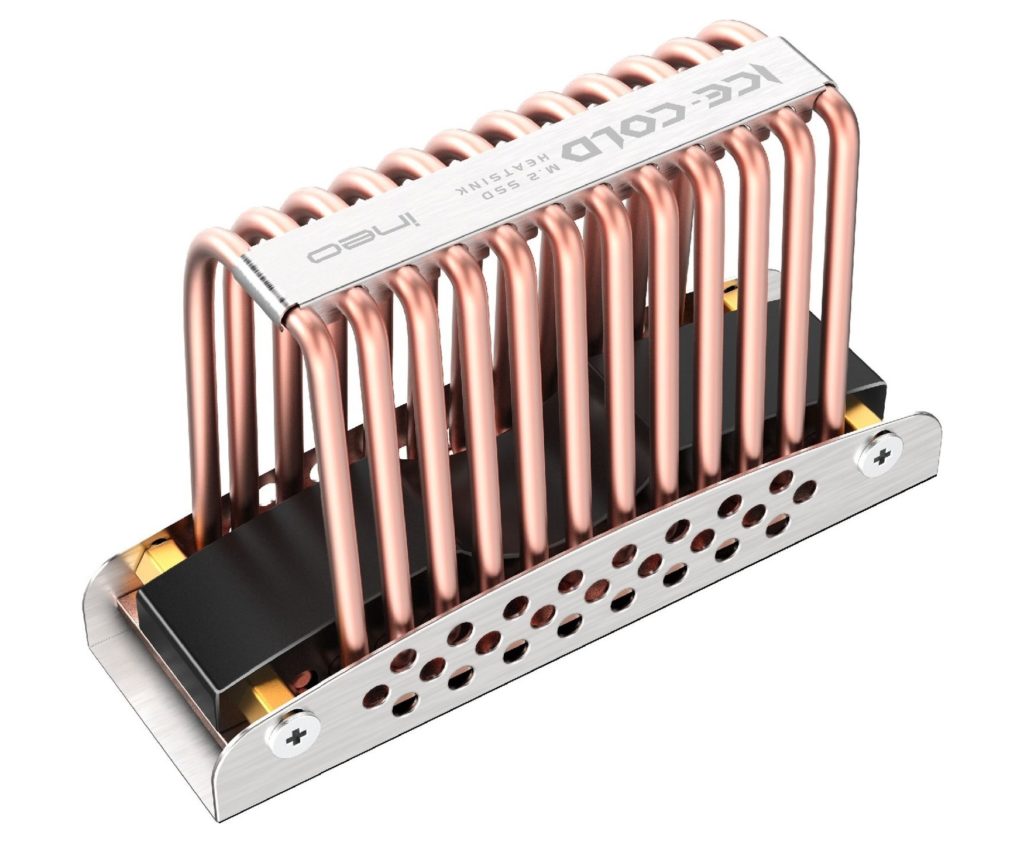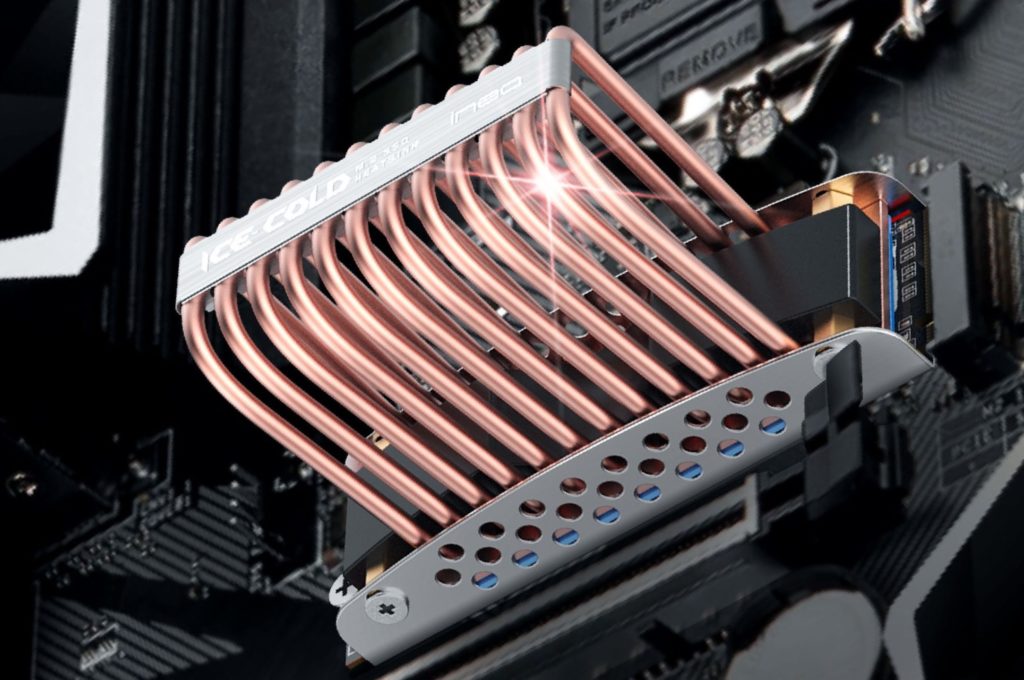Ineo M12: Unique SSD cooler, or return to the icepipe
Many different SSD coolers with atypical designs have been released over the years. But not a single one resembles the Ineo M12. Not only is it copper (but that doesn’t make it unique), but most importantly, it doesn’t use the traditional heatsink profile. In fact, this is most likely the only cooler with a wire heatsink. It also returns to the cooling philosophy of the bankrupt Nofan. The Ineo M12 uses an “icepipe”.
It’s been almost a year and a half since Nofan’s bankruptcy and our condolence pleas have been answered. The icepipe (i.e. thinner copper wires instead of aluminium fins) has not been forgotten. In fact, Ineo has introduced them into its SSD cooler.
This company doesn’t claim anywhere that it’s an icepipe (maybe there’s still a trademark on it?), but it’s obvious that it’s one. One could argue though, especially when Ineo uses the word “tubes” in their terminology and Pufan’s icepipes were full, but most likely it will just be an inaccurate statement.
The thickness of 1.5 mm is too small for the medium (condensate) to be inside as in a heatpipe, and at the ends, the sealing weld is not even visible. Moreover, within such a design, heatpipes would also make no sense because the heat from the base is not transferred to the other, typically aluminium fins. Thus, anything other than solid core wires would be ineffective in such a case.
It is thus a single piece of twisted wire that fits into the milled grooves of the aluminum heatsink on the SSD side. This itself absorbs heat, but most of the cooling capacity will be in the copper wire. Underneath the aluminum heatsink is a copper coldplate, on which thermal paste is applied, and only then is it connected to the SSD itself via a thermal pad. The SSD, by the way, is also cooled from underneath – by a steel tray. All accessories and TIM (two pads and thermal paste) are included in the box.
Ideo’s internal tests demonstrate how the Samsung 970 Evo SSD controller’s (250GB) temperature will reduce with the use of this cooler. Up to 29°C. But that’s apparently only under ideal conditions. In fact, the description on the Amazon website gives a variance with an improvement of 10-25 °C depending on the environment. It’s hard to say where Amazon got this figure from (maybe Ineo mentions it somewhere), but the efficiency will depend on the position of the cooler. The same was the case with Nofan CPU coolers, which had significantly lower efficiency in the vertical (more common in practice) position, because while the bottom was “cold”, the top was at the limit of its capacity.

This design beats conventional passive coolers, but those only work better in cases with the motherboard in a horizontal position. And what also drives this design into inefficiency is active system cooling. It may seem like nonsense, but really, spontaneous heat rising is better for this wired design.
I used to test it in detail on ExtraHardware.cz. Of course, that temperature variance probably also includes how powerful of a SSD you will be cooling. On a more power-efficient model, the temperature drop will naturally be lower than for the most powerful PCI Express 4.0 SSDs.
If you are interested in this cooler, beware of compatibility. As far as SSDs are concerned, only 80mm M.2 models are officially supported, and keep in mind that the cooler is 45mm in height combined with the SSD. Thus, the space above the M.2 slot must be free up to this height. Ineo M12 is currently on sale on Amazon for 20 USD.
English translation and edit by Jozef Dudáš










